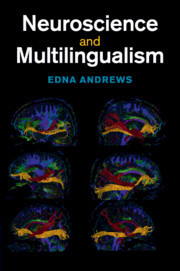Description
Neuroscience and Multilingualism
Author: Andrews Edna
With a sharp focus, this culmination of cutting-edge research offers a new neuroscientific model for analysing multilingualism.
Language: English
Approximative price 34.17 €
In Print (Delivery period: 14 days).
Add to cart
Neuroscience and Multilingualism
Publication date: 12-2019
Support: Print on demand
Publication date: 12-2019
Support: Print on demand
Approximative price 104.26 €
In Print (Delivery period: 14 days).
Add to cart
Neuroscience and Multilingualism
Publication date: 09-2014
270 p. · 15.2x22.9 cm · Hardback
Publication date: 09-2014
270 p. · 15.2x22.9 cm · Hardback
Description
/li>Contents
/li>Biography
/li>
How are languages represented in the human brain? Ideas from neuroscience have increasingly been applied to the study of language, exploring the neural processes involved in acquisition, maintenance and loss of language and languages, and the interaction between languages in bi- and multilingual speakers. With a sharp focus on multilingualism, this culmination of cutting-edge research sheds light on this challenging question. Using data from a variety of experiments, this is the first book-length study to offer a new neuroscientific model for analysing multilingualism. Alongside a comprehensive analysis of the theoretical and experimental contributions to the field, it presents new data and analysis obtained from a multilingualism fMRI study. It also includes a unique longitudinal study of second and third language acquisition combined with extensive empirically valid language proficiency data of the subjects. A must-read for researchers and advanced students interested in neurolinguistics, second language acquisition, and bi- and multilingualism.
1. Assembling the pieces, the neuroscience disciplines essential for the study of language and brain; 2. Building the basis, linguistic contributions to a theory of language and their relevance to the study of language and brain; 3. Neuroscience applications to the study of multilingualism; 4. Exploring the boundaries of cognitive linguistics and neurolinguistics: re-imagining cross-cultural contributions; 5. Imaging technologies in the study of multilingualism: focus on BOLD fMRI; 6. Reassembling the pieces: languages and brains.
Edna Andrews is Professor of Linguistics and Cultural Anthropology and Nancy and Jeffrey Marcus Professor of Slavic and Eurasian Studies at Duke University, North Carolina.
© 2024 LAVOISIER S.A.S.




